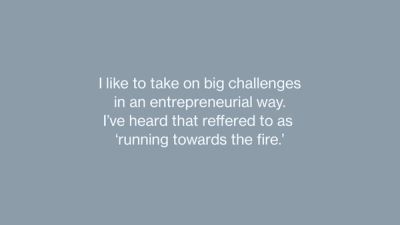
Beauty + Logic: A New Way to Learn Non-Verbal Storytelling
by Alex Moulton, Chief Creative Officer
I am on a constant quest to understand what makes great stories work on screen. Before the internet, a lot of us young filmmakers in New York City bought bootleg screenplays from the guys selling them on the street in SoHo, hoping to supplement what we learned in film school. After the Internet, a little digging can bring big rewards; but most official scripts are still hard to come by. As obsessive as it sounds, I often watch scenes on repeat and map them with Contour (my favorite plotting software) because I love to analyze story structure.
But while reading scripts and mapping stories continue to teach me a lot about what works on-screen, I’ve always wished there was a better way to learn about non-verbal storytelling. So much emotion plays out in between lines of dialogue, and it’s rarely reflected in a script.
Now there’s a new tool for learning the unspoken side of the craft. Everyone has access to it, but most don’t even realize it’s there: audio descriptions on Netflix. I’m convinced it’s the best way to learn non-verbal storytelling.
Audio descriptions, otherwise known as descriptive video, are designed for the visually impaired. It’s an optional audio track recorded live by an expert narrator that describes what’s happening on-screen with incredible fluidity and brevity. An excellent narrator can describe actions, facial expressions, settings, costumes, scene changes, and nuances of story that you might not otherwise notice.
Designing for accessibility presents new and unexpected learning opportunities for everyone.
—Alex Moulton, Chief Creative Officer
If you’ve never heard an audio description, check out this scene from Season One of Daredevil, which is one of a few sharable examples on YouTube.
Mind-blowing, right? At the time of this writing, there are now 394 shows or episodes with audio descriptions on Netflix. It’s a screenwriting masterclass just waiting for you to dive into.
The next time you use Netflix, try turning on the audio description track. After you get over the bizarre feeling of having everything narrated to you, you may realize as I did that you’re watching and listening to the story in a whole new way.

Now that I’ve got your attention, here’s the bigger takeaway: Designing for accessibility presents new and unexpected learning opportunities for everyone.
It’s estimated that 14–21% of the U.S. population suffers from impaired vision, based on self-reporting from 5 states in 2006. If you prefer more conservative estimates, we know that 3% of people over 40 are legally blind or suffer from strong visual impairments. Is that enough to make us think differently about how we design for accessibility? It should be.
In the past few years, accessibility has finally become a major factor in designing interfaces and content platforms. And thanks to strong lobbying (and a few major lawsuits), the needs of the blind are finally being addressed.
In the next few years, we will see even more supporting audio tracks on streaming services and OTT platforms. Perhaps if we realize the greater value these options have for presenting content—even if it’s simply to learn how to tell better stories—we will embrace this positive trend and other modes of accessibility more rapidly.
Explore more
New business inquiries.
How can we help?
NYC 09:50
STK 03:50
LA 06:50
Get our newsletter
Sign up for updates,
insights, and inspirations
from our studio.




